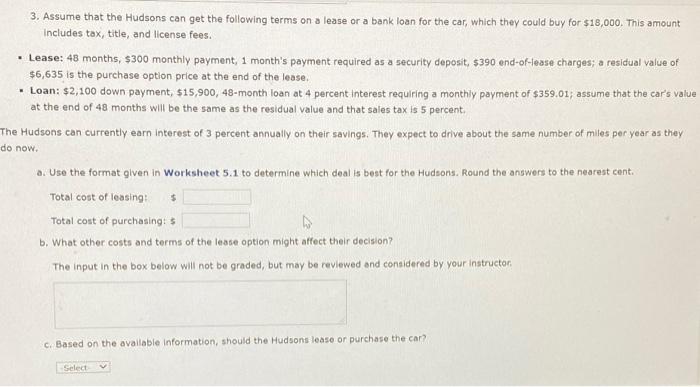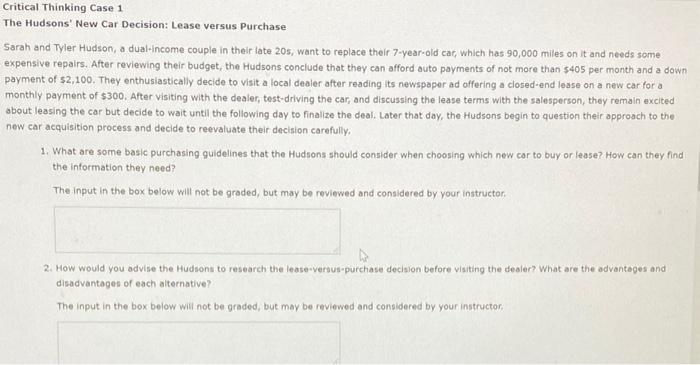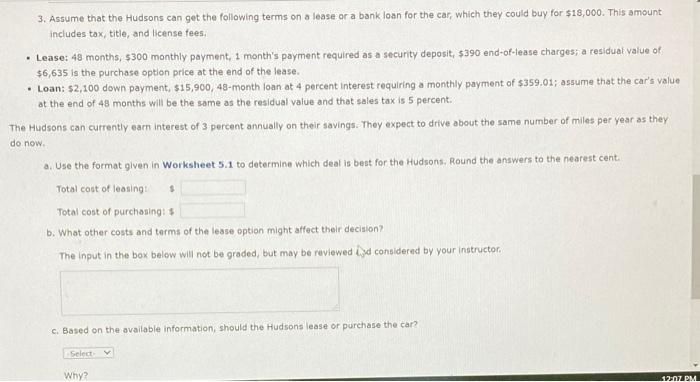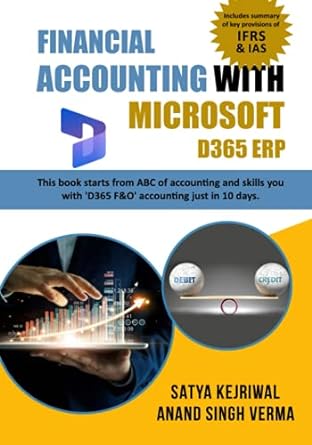hinking Case 1 The Hudsons' New Car Decision: Lease versus Purchase Sarah and Tyler Hudson, a dual-income couple in their late 20s, want to replace their 7-year-old car, which has 90,000 miles on it and needs some expensive repairs. After reviewing their budget, the Hudsons conclude that they can afford auto payments of not more than $405 per month and a down payment of $2,100. They enthusiastically decide to visit a local dealer after reading its newspaper ad offering a closed-end lease on a new car for a monthly payment of $300. After visiting with the dealer, test-driving the car, and discussing the lease terms with the salesperson, they remain excited about leasing the car but decide to wait until the following day to finalize the deal. Later that day, the Hudsons begin to question their approach to the new car acquisition process and decide to reevaluate their decision carefully. 1. What are some basic purchasing guidelines that the Hudsons should consider when choosing which new car to buy or lease? How can they find the Information they need? The input in the box below will not be graded, but may be reviewed and considered by your instructor 2. How would you advise the Hudsons to research the lease versus purchase decision before visiting the dealer? What are the advantages and disadvantages of each alternative? The input in the box below will not be graded, but may be reviewed and considered by your instructor 3. Assume that the Hudsons can get the following terms on a lease or a bank loan for the car, which they could buy for $18,000. This amount Includes tax, title, and license fees. Lease: 48 months, $300 monthly payment, 1 month's payment required as a security deposit, $390 end-of-lease charges; a residual value of $6,635 is the purchase option price at the end of the lease Loan: $2,100 down payment, $15,900, 48-month loan at 4 percent interest requiring a monthly payment of $359.01; assume that the car's value at the end of 48 months will be the same as the residual value and that sales tax is 5 percent. The Hudsons can currently earn Interest of 3 percent annually on their savings. They expect to drive about the same number of miles per year as they do now . Use the format given in Worksheet 5.1 to determine which deal is best for the Hudsons. Round the answers to the nearest cent. Total cost of leasing: Total cost of purchasing b. What other costs and terms of the lease option might affect their decision? The input in the box below will not be graded, but may be reviewed and considered by your instructor $ C. Based on the available information, should the Hudsons lease or purchase the car -Select Critical Thinking Case 1 The Hudsons' New Car Decision: Lease versus Purchase Sarah and Tyler Hudson, a dual-income couple in their late 20s, want to replace their 7-year-old car, which has 90,000 miles on it and needs some expensive repairs. After reviewing their budget, the Hudsons conclude that they can afford auto payments of not more than $405 per month and a down payment of $2,100. They enthusiastically decide to visit a local dealer after reading its newspaper ad offering a closed-end lease on a new car for a monthly payment of $300. After visiting with the dealer, test-driving the car, and discussing the lease terms with the salesperson, they remain excited about leasing the car but decide to wait until the following day to finalize the deal. Later that day, the Hudsons begin to question their approach to the new car acquisition process and decide to reevaluate their decision carefully, 1. What are some basic purchasing guidelines that the Hudsons should consider when choosing which new car to buy or lease? How can they find the information they need? The input in the box below will not be graded, but may be reviewed and considered by your instructor 2. How would you advise the Hudson to research the late-versut -purchase decision before visiting the dealer? What are the advantages and disadvantages of each alternative? The input in the box below will not be graded, but may be reviewed and considered by your instructor 3. Assume that the Hudsons can get the following terms on a lease or a bank loan for the car, which they could buy for $18,000. This amount includes tax, title, and license fees, Lease: 48 months, $300 monthly payment, 1 month's payment required as a security deposit, $390 end-of-leuse charges; a residual value of $6,635 is the purchase option price at the end of the lease. Loan: $2,100 down payment. 515,900, 48-month loan at 4 percent interest requiring a monthly payment of $359,01; assume that the car's value at the end of 48 months will be the same as the residual value and thot sales tax is 5 percent The Hudsons can currently earn interest of 3 percent annually on their savings. They expect to drive about the same number of miles per year as they do now 2. Use the format given in Worksheet 5.1 to determine which deal is best for the Hudsons, Round the answers to the nearest cents Total cost of leasing $ Total cost of purchasing: 5 b. What other costs and terms of the lease option might affect their decision? The input in the box below will not be graded, but may be reviewed id considered by your instructor. c. Based on the available information should the Hudsons lease or purchase the car? -Select Why? 12:07 PM










